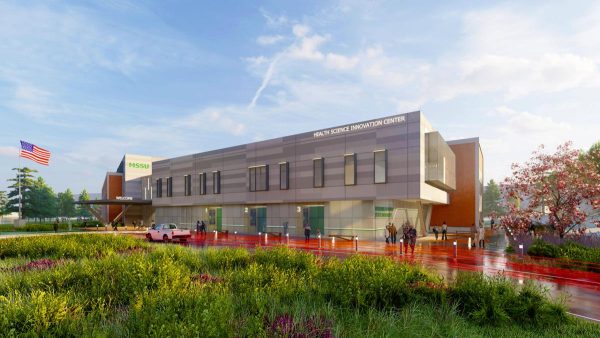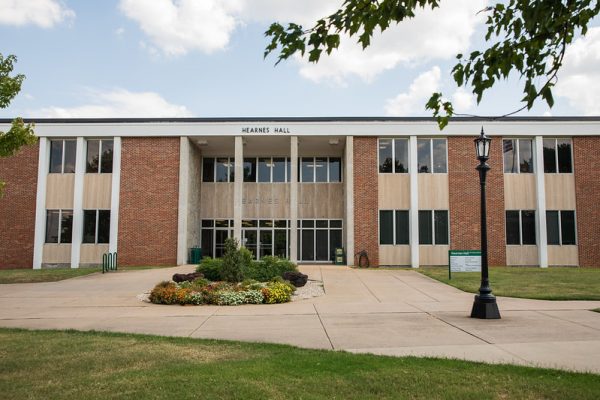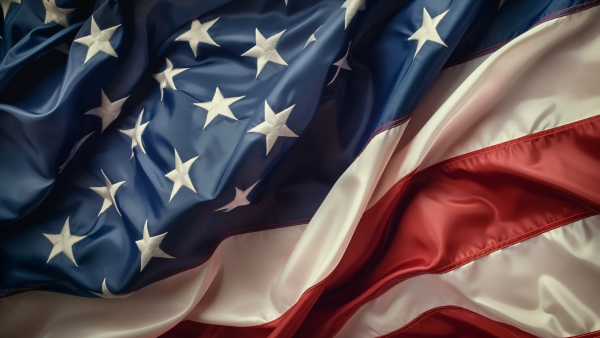A piece of Missouri Southern’s political pie
Across the country, college age voters are turning out in growing numbers. It is important that all demographics of society are represented with in our democracy and their voice is heard. Voting is one of the greatest ways to take action and participate in the direction the country will take moving forward. Colleges across the country are working to increase student turnout and institutional engagement for the next generations involvement in democracy.
The National Study of Learning, Voting and Engagement (NSLVE) is a study of college and university student voting across the U.S. including 1,031 institutes of higher education and over 10 million students. The overall national student voting rate, as of 2018 was 40.3%. As younger voter rates continue to rise, the age gap continues to narrow.
The gap between students over 30 and those under 22 is down to 16.9 percentage points. According to a 2019 report by NSLVE, Tufts University and the Institution for Democracy and Higher Education, the average institutional voting rate (AIVR) in 2018 midterm elections was 39.1% while the estimated national student voting rate (NSVR) was 40.3%. This information shows that “college students turned out to vote at double the rate,” from the AIVR of 19.7% and NSVR of 19.3% in the 2014 midterm elections.1
The highest voter rates were from women in college “with Black women as… the most active voters and Hispanic women making the most significant gains.”2 While this report was able to showcase higher rates of diversity in voting, a survey produced by The Chart showed that while there were more females than males, the majority of respondents were Caucasian.
The report goes on to explain that because voting rates at NSLVE colleges and universities more than doubled as well as student voter turnout, the increase of student voter turnout was seen across the country rather than isolated to a few campuses.3 Overall, 99% of NSLVE campuses saw rate increases and the national student registration rate rose from 65.3% to 73.3% and national student turnout of registered students also saw an increase from 29.6% to 55.0% between 2014 to 2018 midterm elections. To put this into perspective, the report estimated that 7.5 million students voted in the 2018 midterm election.
However, despite the overall increases, voting gaps between disciplines continued in 2018. Students majoring in the humanities, social sciences, and education had a higher turnout rate than those majoring in science, technology, engineering, and math (STEM) fields or in business. While female students are increasing in STEM fields, it is still heavily male dominated with only seven percent of female graduates in 2016 doing so with a degree considered STEM. Meanwhile the humanities, social sciences, and education fields tend to have more females enrolled. If the data shown is correct, this may explain why the gap would be increasing.
According to the survey by The Chart, out of 329 students who responded 304 were already registered to vote while there were 23 who were not. A piece of data shown was the breakdown of which side of the political spectrum students found themselves.
As shown in the graph, there is a pretty even split among students and whether they see themselves as a republican or a democrat. In a study by Cedarville University, they found that while there was a small “liberalizing” effect on those who attended liberal arts college, many of those students identified as moderate, however, based on the survey The Chart sent out, that was not the case even though Southern is a liberal arts college.
In fact, that same study by Cedarville University suggested that there were disproportionately left leaning students at liberal arts colleges and those who are in graduate or doctoral programs.
Among those students who vote, most tend to vote in local, state and national elections. While seniors were the largest percentage of voters, all class standings were represented.
Your donation will support the student journalists of Missouri Southern State University. Your contribution will allow us to purchase equipment and cover our annual website hosting costs.





























